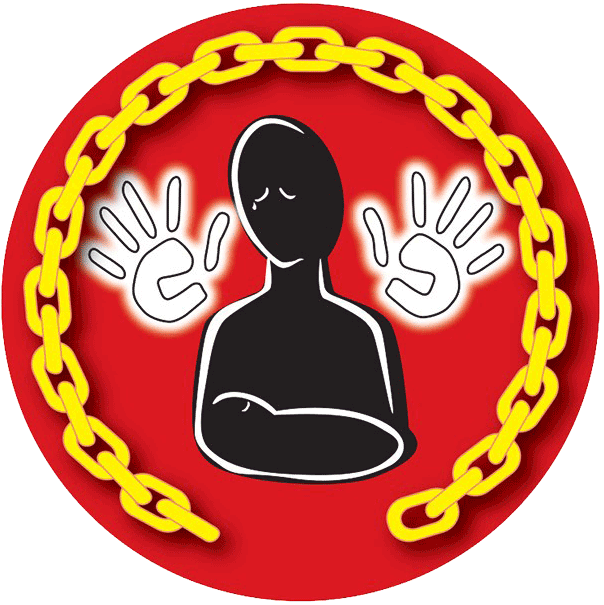‘New priorities needed to halt the misery’
Malcolm Fraser Speech
National Indigenous Times
1 June 2006
If Australia is to tackle the massive disadvantage facing Indigenous Australians it must stop shifting blame and look to successful programs in other First Nations, writes Malcolm Fraser.
What do we do about the tragic situation in some Aboriginal communities exposed by crown prosecutor Nanette Rogers?
Firstly, let’s stop blaming each other. We have all helped create the situation. The stories of Aboriginal men bashing and raping their women and children are horrific. But anyone who studies the history of European settlement knows that white men have been guilty of terrible crimes on Aboriginal women and children. Tens of thousands of mixed race children were born to liaisons between white men and Aboriginal women, and we cannot pretend that all were conceived in consensual relationships. Far from it. Many of the children were then forcibly removed from their mothers under the policies of the time, often with their father’s consent — if he could be found.
Certainly we need more police in Aboriginal communities, and we need to prosecute wrong-doers. But that is only a small part of the solution. We now need to commit ourselves to dealing effectively with the underlying wrongs.
We should be ashamed that many Indigenous Australians live in conditions beyond the comprehension of most of us, shocking even by Third World standards.
We should be ashamed that there is a near 20-year difference in life expectancy between Indigenous and other Australians, when comparable countries show us that dramatic improvement is possible.
We should be ashamed that the sight of over 20,000 Indigenous children is being destroyed by trachoma, a disease which was eliminated from every other developed country decades ago.
We should be ashamed that of all Western countries with an Indigenous population, we are the only one that has no elected Indigenous representation.
Report after report has come out, detailing what needs to be done. But we have largely ignored the reports, and then wonder why we are not making progress.
The Bringing Them Home report is an example. The Federal Government put some funds towards a few of its recommendations, such as the Link-Up service to bring together separated families. But it made no attempt to discover the size of the need, and Link-Up is able to meet only a small fraction of the demand. Meanwhile the State Governments apologised formally, but put few funds into programmes which could help the stolen generations overcome the difficulties they face.
This has serious consequences. As last year’s West Australian Aboriginal Child Health Survey showed, the effects of the removal policies do not stop with those who were removed from their families — they go on into the next generation. Unless we deal with the consequences of misguided past policies, we will have a further generation coping with unacceptable levels of mental stress.
If we are to overcome this situation, we need to adopt new priorities. We need:
A 20-year plan to transform the condition of Aboriginal Australia. The Council for Aboriginal Reconciliation drew up a good plan, and established benchmarks. Let us see a development of this plan, and bipartisan support, so that any indication of failure attracts immediate remedial action. Today there are less Indigenous people in the Federal public service than there were five years ago. Such a situation should have been remedied the moment it was discovered.
Indigenous representative leadership. At present most of the best-known Aboriginal leaders have been chosen by non-Indigenous institutions. Sue Gordon was chosen by the Government, Warren Mundine by the Labor Party. We need leaders elected by their own people. Democracy is a learned art, and may not always throw up good leaders. But it empowers ordinary voters and, given time, develops attitudes of civic responsibility. ATSIC was a good start, in need of reform, not closure.
An apology from the Federal Parliament. This would help to rebuild trust and establish partnership. It is not the words that matter, so much as the acceptance of responsibility to put right the damage done.
Take the community of Wadeye in the Northern Territory, which has been in the news recently. That community grew because Government policies pushed Aboriginal stockmen off the stations. Yet our Governments have done little to find employment for those who now live in Wadeye. Apart from CDEP jobs, there are only 25 paying jobs in a community of 2,500. This is a recipe for social disaster, and that is what we are seeing. Having created the problem by unwise policies, our Governments have a responsibility to give the residents of Wadeye a healthy and economically-viable future.
The Canadian Government accepts this responsibility. Their officers sit down with the leaders of remote communities and work out enterprises appropriate to that community. Then they provide the infrastructure needed, and the training. As a result, remote communities in Canada are now running their local railways, managing forestry and a host of other enterprises.
There is a cost to this. Canada spends 50% more per Indigenous person on its Indigenous community than Australia. The result is that Indigenous Canadians are healthier, and many more are contributing to the national economy.
Meet the urgent financial needs of Aboriginal communities. The AMA says that Aboriginal health is underfunded by $450 million per year. In Canada, the USA and New Zealand there have been dramatic improvements in the health and life expectancy of their Indigenous populations, and our medical experts say that we would see the same if we put in the resources. This would also improve governance; at present community leaders are dying in their fifties, just the time when they are best able to give wise leadership.
And there is a desperate need for housing. We will not get on top of a disease like trachoma while it is common to find fifteen people living in a three-bedroom house.
Special measures for Aboriginal Australians Noel Pearson is right that we have bred a welfare mentality in many Aboriginal communities. This stemmed from the mistaken belief that there needs to be one policy for all Australians and it must be the same regardless of circumstance. We need policies specially shaped for Aboriginal people.
This should include affirmative action. Abstudy enabled many Aboriginal people to attend university. Since it has been cut back, the number of Aboriginal people in our universities has fallen. At a time we desperately need Indigenous expertise in our professional and Government institutions, we are stifling the source of this expertise.
A commitment to provide services to remote Indigenous communities. At present influential people are arguing that these communities are uneconomic, and their inhabitants should be persuaded to move. This is used as an excuse to leave them seriously deprived. Voluntary consolidation of communities may well be possible in some cases. Their young people should be offered training opportunities elsewhere. But there are good reasons why those groups chose to move to isolated areas, and they must be understood and respected.
Encourage voluntary action. A million people walking for reconciliation in 2000 could translate into some thousands of people — health professionals, artisans, teachers — taking a few weeks’ leave from their work to go to an Aboriginal community. And often to train community members in their skill. The evidence is that friendships grow through such a scheme, leading to a long-term commitment by many of the volunteers. Over time, that can contribute significantly to the wellbeing of those who live in that community — and of the volunteers.
A 20-year plan to overcome substance abuse and addiction. Here again, Canada can show us the way. In the late 1970s the Government of Alberta inquired into the causes of social disaster in Aboriginal communities. It found that one cause was the large proportion of those giving leadership in these communities who had an alcohol problem. In response, they established the Nechi Institute in the province capital, Edmonton. This Institute is run by Indigenous people, using Indigenous methods, and over the past 20 years has trained 4,000 Indigenous people in drug and alcohol work. They have gone out to every community in Alberta. Today a majority of those giving leadership in Indigenous communities are non-drinkers, and non-drinking has become an asset in the elections for community leaders. This has been achieved by education, not by alcohol bans.
A founder of the Nechi Institute, Indigenous Canadian Dr Maggie Hodgson, wrote in the 2003 book, Nation to Nation: Aboriginal Sovereignty and the Future of Canada: ‘The National Native Alcohol and Drug Abuse Program started in 1982. As people began to sober up, many wanted to further their education. The number of university graduates swelled from a few hundred in the 1980s to 30,000 in the 1990s. The Royal Commission on Aboriginal Peoples (1991-6) heard from an articulate, healthier, and better-balanced Aboriginal community. Many of our people had trained as social and legal workers. Our social agencies were largely staffed by our own people, who understood the worldview of their communities – a huge change from the 1970s when most community service people were non-native.’
The Bridge walks and similar initiatives show that many Australians want to end the denial of past wrongs, and accord justice to the Aboriginal community. We need a sense of pride in our nation as a complete entity. Out of that will come the readiness to build the partnerships and expend the funds which will transform the condition of Aboriginal Australia.
(Malcolm Fraser is the 22nd Prime Minister of Australia. This is an extended version of an extract published in The Age newspaper.)

